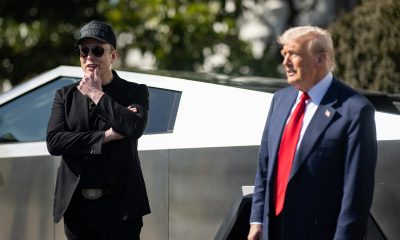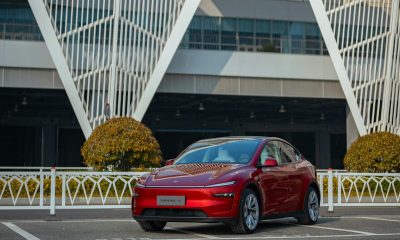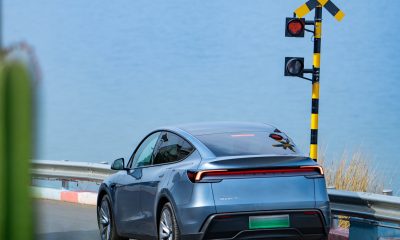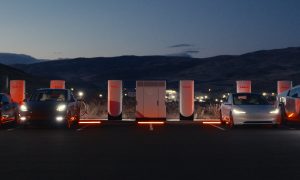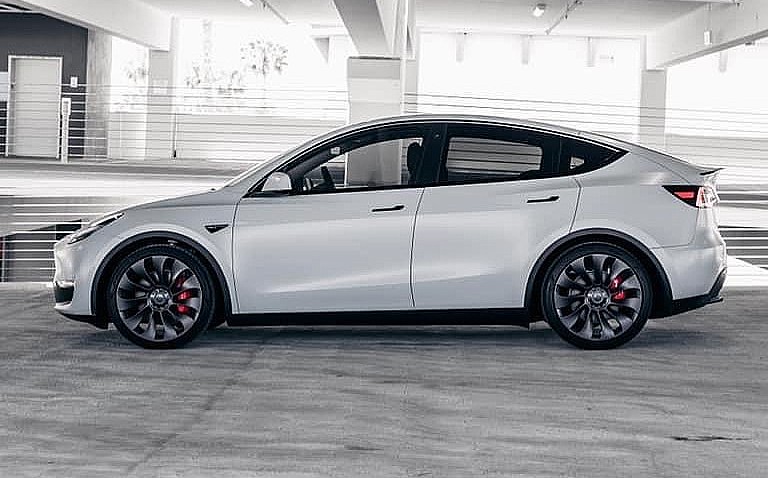

News
Tesla Autopilot ‘easily tricked’ by Consumer Reports in bizarre test
Consumer Reports claims to have shown that Tesla Autopilot can be “easily tricked” into driving without anyone in the driver’s seat. The test process was extremely bizarre and required certain items that most drivers would never have in their vehicles.
CR released a report on April 22nd entitled, “CR Engineers Show a Tesla Will Drive With No One in the Driver’s Seat.” The test was in response to the recent and very public Tesla Model S crash in Texas, where two men, unfortunately, passed away after their all-electric sedan crashed violently into a tree at a high speed. Investigators are attempting to determine whether the vehicle was “driverless,” a claim made by several mainstream media outlets. CEO Elon Musk chimed in just days after the crash and the very public coverage of it to say that it would be impossible for Autopilot to function on the road where the crash occurred due to the lack of road lines, which are required to initiate the use of Basic Autopilot.
Tesla alleged “driverless” crash in Texas: What is known so far
The CR test required the vehicle, a Tesla Model Y, to be in motion, and engineers then engaged Autopilot and set the speed dial to 0, which brought the car to a stop. Next, Jake Fisher, CR’s Senior Director of Auto Testing, placed a “small, weighted chain on the steering wheel, to simulate the weight of a driver’s hand, and slid over into the front passenger seat without opening any of the vehicle’s doors, because that would disengage Autopilot.” The Autopilot speed was then adjusted so that the vehicle would accelerate from its stationary position. The car managed to drive up and down the half-mile lane of the CR test track, although nobody was in the seat or controlling the vehicle. “It was a bit frightening when we realized how easy it was to defeat the safeguards, which we proved were clearly insufficient,” Fisher said. The engineers encouraged nobody to try the experiment at home, but who will have a custom weighted chain sitting around to experiment with anyway?
“In our evaluation, the system not only failed to make sure the driver was paying attention, but it also couldn’t tell if there was a driver there at all,” Fisher added, but he wasn’t done throwing shade at Tesla. “Tesla is falling behind other automakers like GM and Ford that, on models with advanced driver assist systems, use technology to make sure the driver is looking at the road.” GM’s SuperCruise and Ford’s recently released BlueCruise are what Fisher is referencing, but the comparisons don’t really add up.
Tesla Autopilot has over 23 billion real-world miles of data that is stored in a Neural Network to improve performance. With every mile driven, Tesla’s semi-autonomous driving functionalities become more robust, more precise, and more adaptable to human behavior. Ford and GM have accumulated only a fraction of these statistics. Tesla, meanwhile, recently reported its Q1 2021 Safety Report, where it found that Autopilot is nearly 10 times safer than human driving.
Tesla’s Q1 2021 accident data shows Autopilot is closing in on being 10X safer than humans
The test performed by CR is extremely bizarre because people would not normally have all of these things in their vehicle or even in their possession, to begin with. Tesla maintains that drivers are responsible for remaining attentive during the entirety of their driving experience. The company has never claimed to have released a program capable of Level 5 autonomy where a driver needs to pay no attention to the road or the vehicle’s surroundings. Yet, Tesla’s very-publicized crash raises questions from those who have a historical distaste for the company and its products. Consumer Reports has not been keen on Tesla in the past. They have indicated that GM’s SuperCruise, despite being less effective or safe than Autopilot based on data, holds a commanding lead over Tesla’s semi-autonomous driving program.
It is worth noting that Tesla has several safety thresholds that would prohibit anyone from attempting to let the vehicle drive itself. These include a steering wheel monitoring system, which will bring the car to a complete stop if the driver is not holding it. The system also requires a driver to be in the seat to function, and the company recently revoked FSD software from several drivers who were abusing the program by being inattentive. More safety features, like a facial features recognition camera, will monitor the driver’s eyes and face to ensure they are paying attention to the road.
What are your thoughts on the CR study? Let us know in the comments, or let me know at @KlenderJoey on Twitter. You can email me at joey@teslarati.com as well.
Elon Musk
Tesla analysts believe Musk and Trump feud will pass
Tesla CEO Elon Musk and U.S. President Donald Trump’s feud shall pass, several bulls say.
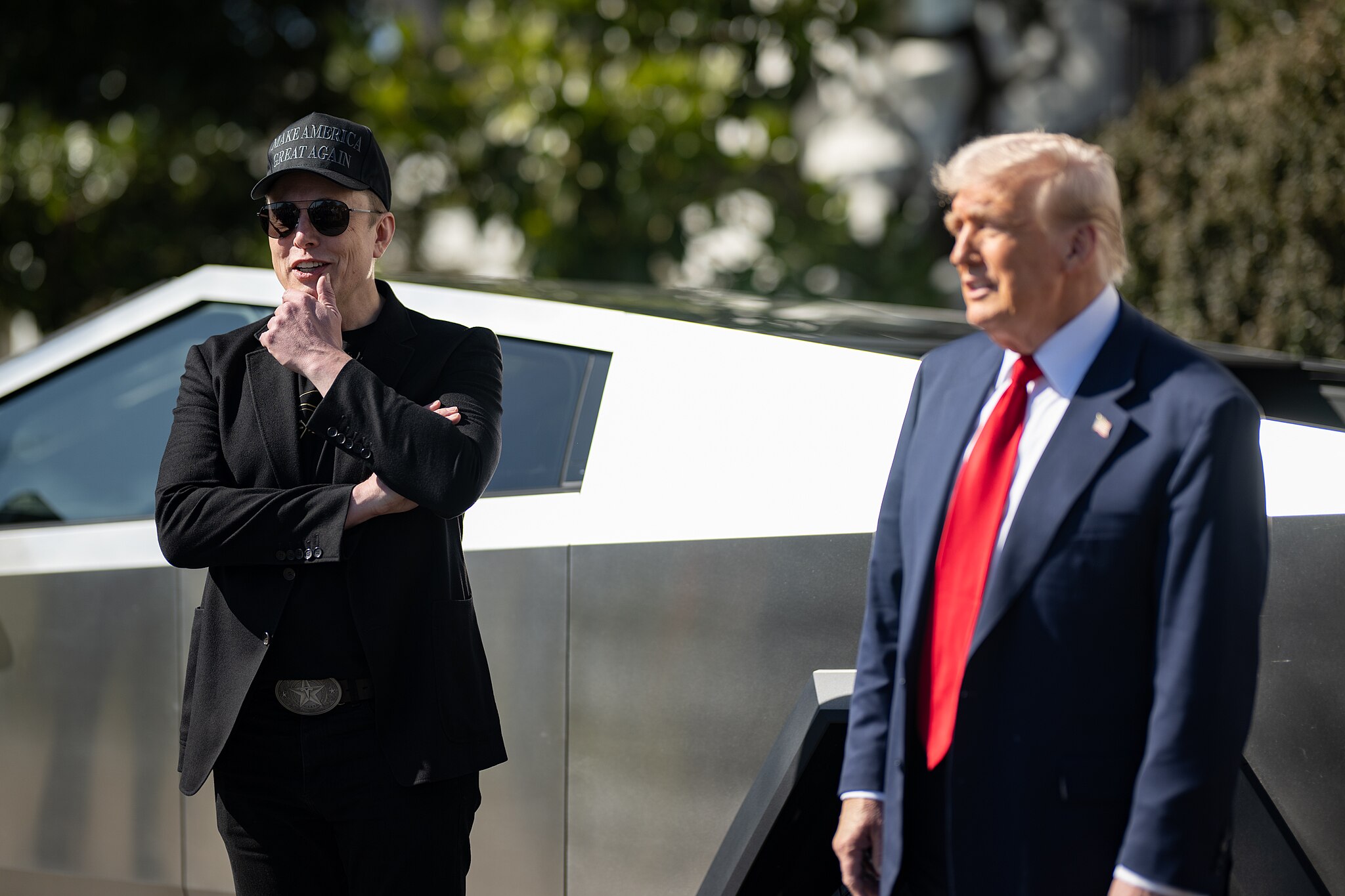
Tesla analysts are breaking down the current feud between CEO Elon Musk and U.S. President Donald Trump, as the two continue to disagree on the “Big Beautiful Bill” and its impact on the country’s national debt.
Musk, who headed the Department of Government Efficiency (DOGE) under the Trump Administration, left his post in May. Soon thereafter, he and President Trump entered a very public and verbal disagreement, where things turned sour. They reconciled to an extent, and things seemed to be in the past.
However, the second disagreement between the two started on Monday, as Musk continued to push back on the “Big Beautiful Bill” that the Trump administration is attempting to sign into law. It would, by Musk’s estimation, increase spending and reverse the work DOGE did to trim the deficit.
Every member of Congress who campaigned on reducing government spending and then immediately voted for the biggest debt increase in history should hang their head in shame!
And they will lose their primary next year if it is the last thing I do on this Earth.
— Elon Musk (@elonmusk) June 30, 2025
President Trump has hinted that DOGE could be “the monster” that “eats Elon,” threatening to end the subsidies that SpaceX and Tesla receive. Musk has not been opposed to ending government subsidies for companies, including his own, as long as they are all abolished.
How Tesla could benefit from the ‘Big Beautiful Bill’ that axes EV subsidies
Despite this contentious back-and-forth between the two, analysts are sharing their opinions now, and a few of the more bullish Tesla observers are convinced that this feud will pass, Trump and Musk will resolve their differences as they have before, and things will return to normal.
ARK Invest’s Cathie Wood said this morning that the feud between Musk and Trump is another example of “this too shall pass:”
BREAKING: CATHIE WOOD SAYS — ELON AND TRUMP FEUD “WILL PASS” 👀 $TSLA
She remains bullish ! pic.twitter.com/w5rW2gfCkx
— TheSonOfWalkley (@TheSonOfWalkley) July 1, 2025
Additionally, Wedbush’s Dan Ives, in a note to investors this morning, said that the situation “will settle:”
“We believe this situation will settle and at the end of the day Musk needs Trump and Trump needs Musk given the AI Arms Race going on between the US and China. The jabs between Musk and Trump will continue as the Budget rolls through Congress but Tesla investors want Musk to focus on driving Tesla and stop this political angle…which has turned into a life of its own in a roller coaster ride since the November elections.”
Tesla shares are down about 5 percent at 3:10 p.m. on the East Coast.
Elon Musk
Tesla scrambles after Musk sidekick exit, CEO takes over sales
Tesla CEO Elon Musk is reportedly overseeing sales in North America and Europe, Bloomberg reports.

Tesla scrambled its executives around following the exit of CEO Elon Musk’s sidekick last week, Omead Afshar. Afshar was relieved of his duties as Head of Sales for both North America and Europe.
Bloomberg is reporting that Musk is now overseeing both regions for sales, according to sources familiar with the matter. Afshar left the company last week, likely due to slow sales in both markets, ending a seven-year term with the electric automaker.
Tesla’s Omead Afshar, known as Elon Musk’s right-hand man, leaves company: reports
Afshar was promoted to the role late last year as Musk was becoming more involved in the road to the White House with President Donald Trump.
Afshar, whose LinkedIn account stated he was working within the “Office of the CEO,” was known as Musk’s right-hand man for years.
Additionally, Tom Zhu, currently the Senior Vice President of Automotive at Tesla, will oversee sales in Asia, according to the report.
It is a scramble by Tesla to get the company’s proven executives over the pain points the automaker has found halfway through the year. Sales are looking to be close to the 1.8 million vehicles the company delivered in both of the past two years.
Tesla is pivoting to pay more attention to the struggling automotive sales that it has felt over the past six months. Although it is still performing well and is the best-selling EV maker by a long way, it is struggling to find growth despite redesigning its vehicles and launching new tech and improvements within them.
The company is also looking to focus more on its deployment of autonomous tech, especially as it recently launched its Robotaxi platform in Austin just over a week ago.
However, while this is the long-term catalyst for Tesla, sales still need some work, and it appears the company’s strategy is to put its biggest guns on its biggest problems.
News
Tesla upgrades Model 3 and Model Y in China, hikes price for long-range sedan
Tesla’s long-range Model 3 now comes with a higher CLTC-rated range of 753 km (468 miles).
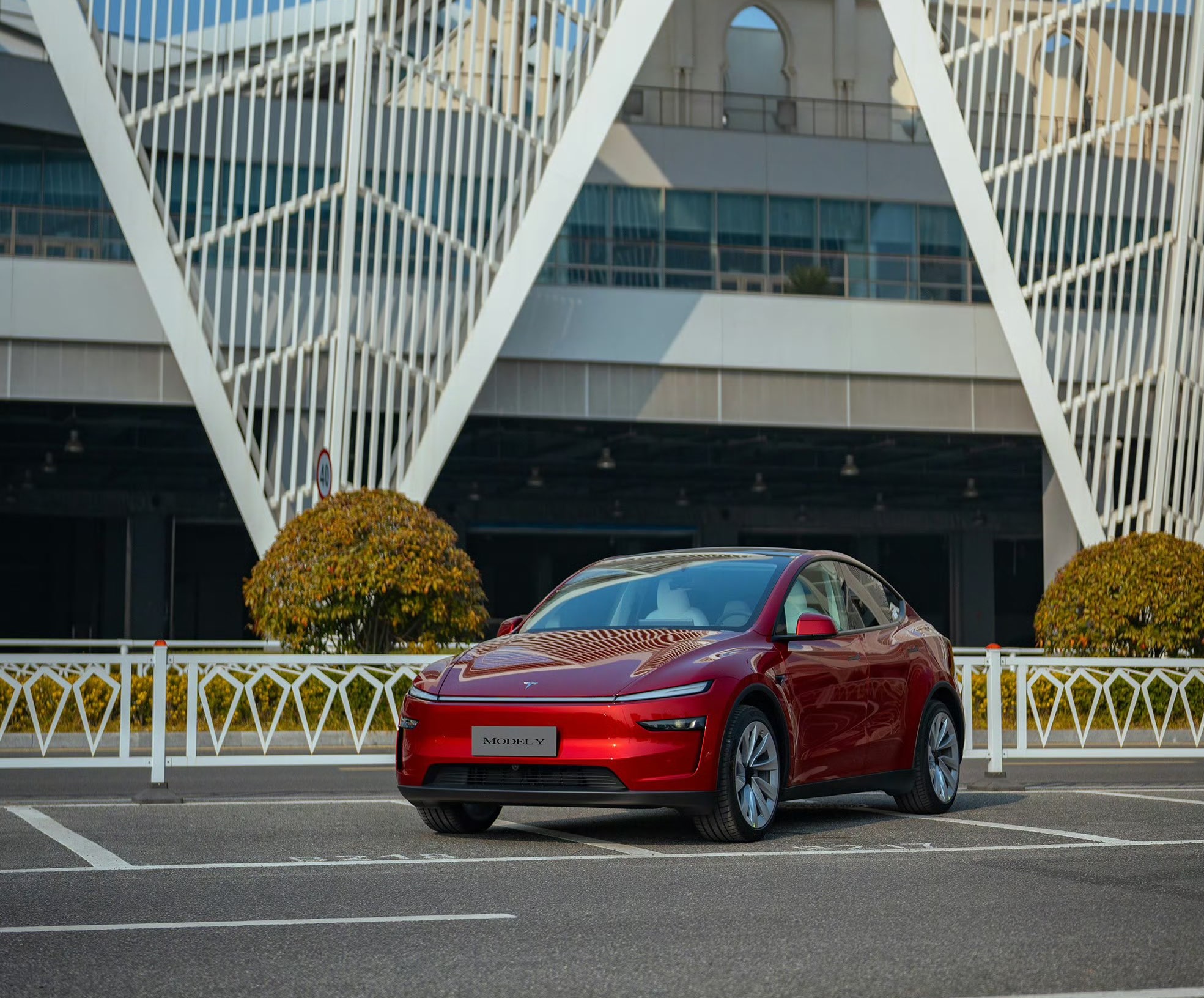
Tesla has rolled out a series of quiet upgrades to its Model 3 and Model Y in China, enhancing range and performance for long-range variants. The updates come with a price hike for the Model 3 Long Range All-Wheel Drive, which now costs RMB 285,500 (about $39,300), up RMB 10,000 ($1,400) from the previous price.
Model 3 gets acceleration boost, extended range
Tesla’s long-range Model 3 now comes with a higher CLTC-rated range of 753 km (468 miles), up from 713 km (443 miles), and a faster 0–100 km/h acceleration time of 3.8 seconds, down from 4.4 seconds. These changes suggest that Tesla has bundled the previously optional Acceleration Boost for the Model 3, once priced at RMB 14,100 ($1,968), as a standard feature.
Delivery wait times for the long-range Model 3 have also been shortened, from 3–5 weeks to just 1–3 weeks, as per CNEV Post. No changes were made to the entry-level RWD or Performance versions, which retain their RMB 235,500 and RMB 339,500 price points, respectively. Wait times for those trims also remain at 1–3 weeks and 8–10 weeks.
Model Y range increases, pricing holds steady
The Model Y Long Range has also seen its CLTC-rated range increase from 719 km (447 miles) to 750 km (466 miles), though its price remains unchanged at RMB 313,500 ($43,759). The model maintains a 0–100 km/h time of 4.3 seconds.
Tesla also updated delivery times for the Model Y lineup. The Long Range variant now shows a wait time of 1–3 weeks, an improvement from the previous 3–5 weeks. The entry-level RWD version maintained its starting price of RMB 263,500, though its delivery window is now shorter at 2–4 weeks.
Tesla continues to offer several purchase incentives in China, including an RMB 8,000 discount for select paint options, an RMB 8,000 insurance subsidy, and five years of interest-free financing for eligible variants.
-

 Elon Musk1 day ago
Elon Musk1 day agoTesla investors will be shocked by Jim Cramer’s latest assessment
-

 News6 days ago
News6 days agoTesla Robotaxi’s biggest challenge seems to be this one thing
-

 News2 weeks ago
News2 weeks agoTesla’s Grok integration will be more realistic with this cool feature
-

 Elon Musk2 weeks ago
Elon Musk2 weeks agoElon Musk slams Bloomberg’s shocking xAI cash burn claims
-

 News2 weeks ago
News2 weeks agoTesla China roars back with highest vehicle registrations this Q2 so far
-

 News2 weeks ago
News2 weeks agoTexas lawmakers urge Tesla to delay Austin robotaxi launch to September
-

 News2 weeks ago
News2 weeks agoTesla dominates Cars.com’s Made in America Index with clean sweep
-

 Elon Musk1 week ago
Elon Musk1 week agoFirst Look at Tesla’s Robotaxi App: features, design, and more


